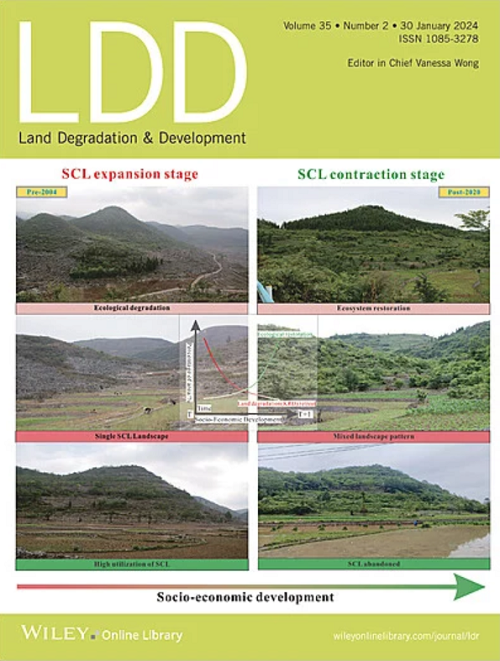淮河流域水资源与气候安全径流格局时空动态及归因分析
IF 3.6
2区 农林科学
Q2 ENVIRONMENTAL SCIENCES
引用次数: 0
摘要
了解河流流量的时空演变与特征对有效的水资源管理和气候安全至关重要。本文对中国主要水文区淮河流域多时间尺度的径流动态进行了综合分析。通过检查年际、年际和年代际趋势,研究描绘了径流模式的趋势、突变和周期性。采用双质量曲线(DMC)方法,综合考虑植被动态、人为取水和气候变化的影响,量化径流变化。结果表明,淮河流域年径流分布极不均匀。除横排头段外,大部分水文站的年、汛期和非汛期径流量均呈统计学上不显著的下降趋势。在所有径流序列中,在1990年和2000年前后检测到显著的突变点,以及以30年为主要周期的周期性波动。归因分析表明,人类活动占观测到的流量变化的80%以上。在流域上游,间接人为因素(如土地利用变化和植被动态)占主导地位,而在中游,直接人为干预的影响更大。这些发现有助于进一步认识自然过程与人为水文影响之间的相互作用,为气候变化条件下淮河流域及类似地区水资源可持续管理提供科学依据。本文章由计算机程序翻译,如有差异,请以英文原文为准。
Spatiotemporal Dynamics and Attribution Analysis of Multitemporal Runoff Patterns for Water Resources and Climate Security in Huaihe River Basin
Understanding the spatiotemporal evolution and attribution of streamflow is critical for effective water resource management and climate security. This study conducts a comprehensive analysis of runoff dynamics across multiple temporal scales in the Huaihe River basin, which is a major hydrological region in China. By examining annual, interannual, and interdecadal trends, the research delineates tendencies, abrupt changes, and periodicity in runoff patterns. The double mass curve (DMC) method is applied to quantify runoff variations, incorporating influences of vegetation dynamics, anthropogenic water withdrawals, and climate change. The results reveal a highly uneven annual runoff distribution in the Huaihe River basin. Most hydrometric stations show statistically insignificant declining trends in annual, flood-season, and non-flood-season runoff, except for the Hengpaitou section. Significant mutation points are detected around 1990 and 2000 across all runoff series, along with periodic fluctuations featuring dominant about 30-year cycles. Attribution analysis indicates that human activities account for over 80% of the observed streamflow variations. In the upper basin, indirect anthropogenic factors (e.g., land use changes and vegetation dynamics) dominate, whereas direct human interventions have a stronger influence in the middle reaches. These findings enhance understanding of the interactions between natural processes and anthropogenic impacts on hydrology, providing a scientific basis for sustainable water resource management under climate change in the Huaihe River basin and similar regions.
求助全文
通过发布文献求助,成功后即可免费获取论文全文。
去求助
来源期刊

Land Degradation & Development
农林科学-环境科学
CiteScore
7.70
自引率
8.50%
发文量
379
审稿时长
5.5 months
期刊介绍:
Land Degradation & Development is an international journal which seeks to promote rational study of the recognition, monitoring, control and rehabilitation of degradation in terrestrial environments. The journal focuses on:
- what land degradation is;
- what causes land degradation;
- the impacts of land degradation
- the scale of land degradation;
- the history, current status or future trends of land degradation;
- avoidance, mitigation and control of land degradation;
- remedial actions to rehabilitate or restore degraded land;
- sustainable land management.
 求助内容:
求助内容: 应助结果提醒方式:
应助结果提醒方式:


